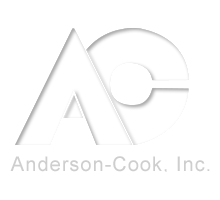Why Spline Rolling?
Versatility
The terms “spline rolling” and “cold forming” are used interchangeably but the process can produce far more than spline geometries. Examples include: helicals, threads, snap-rings, worms, spurs, tapered, oil grooves, pinions, and burnishing. Cold forming can also be used to generate sheet-metal parts. Multiple pairs of racks can be utilized in the same stroke, allowing multiple geometries to be rolled on a single part in a single machine cycle.
Strength, Finish, Precision
Spline rolling forms part geometries by forcing, and controlling, material “displacement.” Extreme forces are exerted on the part by the rack. At high enough pressure the part’s metal flows between the rack teeth. Displacement offers numerous benefits. The flowing metal is carefully controlled by the geometry of the rack offering unmatched accuracy and repeatability. Displacement also work-hardens the surface of the rolled part offering up to 40% greater load-carrying characteristics. Lastly, the controlled displacement results in a finer surface finish, offering improved fit characteristics, less backlash and better overall assembly longevity and performance.
Why Anderson-Cook?
- Manufacturing Capability
- Outstanding Service and Repair
- Superior Rack Management Services
- Customer Flexibility/Responsiveness
- Innovative Technology Leader in North America
- World Class Quality
- Testing Capability
- International Experience
- Prototype Capability
- ISO Certification
- Turn Key Equipment
Please contact us with any questions regarding spline rolling.
